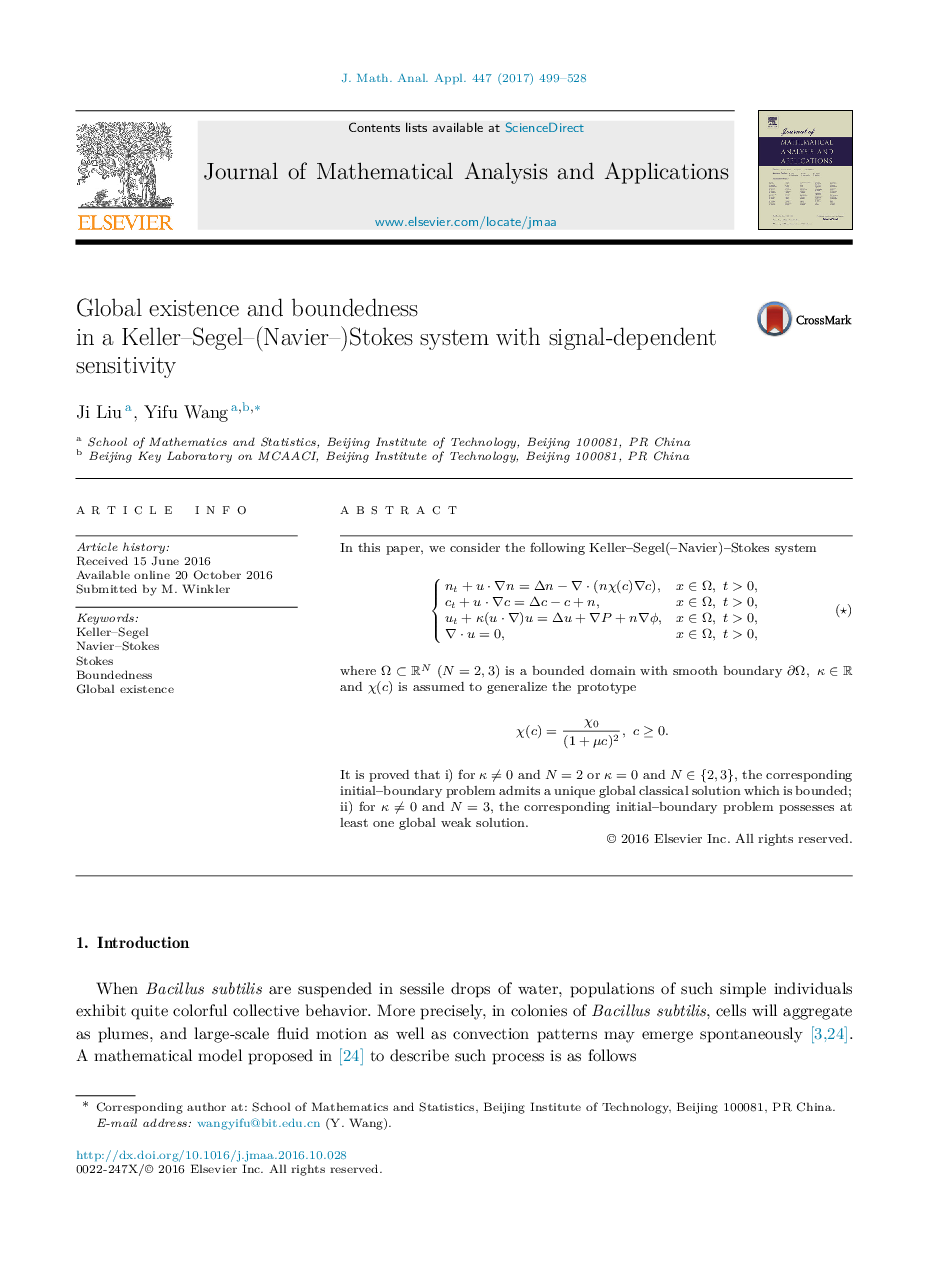| Article ID | Journal | Published Year | Pages | File Type |
|---|---|---|---|---|
| 4613748 | Journal of Mathematical Analysis and Applications | 2017 | 30 Pages |
Abstract
In this paper, we consider the following Keller–Segel(–Navier)–Stokes systemequation(⋆){nt+u⋅∇n=Δn−∇⋅(nχ(c)∇c),x∈Ω, t>0,ct+u⋅∇c=Δc−c+n,x∈Ω, t>0,ut+κ(u⋅∇)u=Δu+∇P+n∇ϕ,x∈Ω, t>0,∇⋅u=0,x∈Ω, t>0, where Ω⊂RN (N=2,3)Ω⊂RN (N=2,3) is a bounded domain with smooth boundary ∂Ω, κ∈R∂Ω, κ∈R and χ(c)χ(c) is assumed to generalize the prototypeχ(c)=χ0(1+μc)2, c≥0. It is proved that i) for κ≠0κ≠0 and N=2N=2 or κ=0κ=0 and N∈{2,3}N∈{2,3}, the corresponding initial–boundary problem admits a unique global classical solution which is bounded; ii) for κ≠0κ≠0 and N=3N=3, the corresponding initial–boundary problem possesses at least one global weak solution.
Related Topics
Physical Sciences and Engineering
Mathematics
Analysis
Authors
Ji Liu, Yifu Wang,
